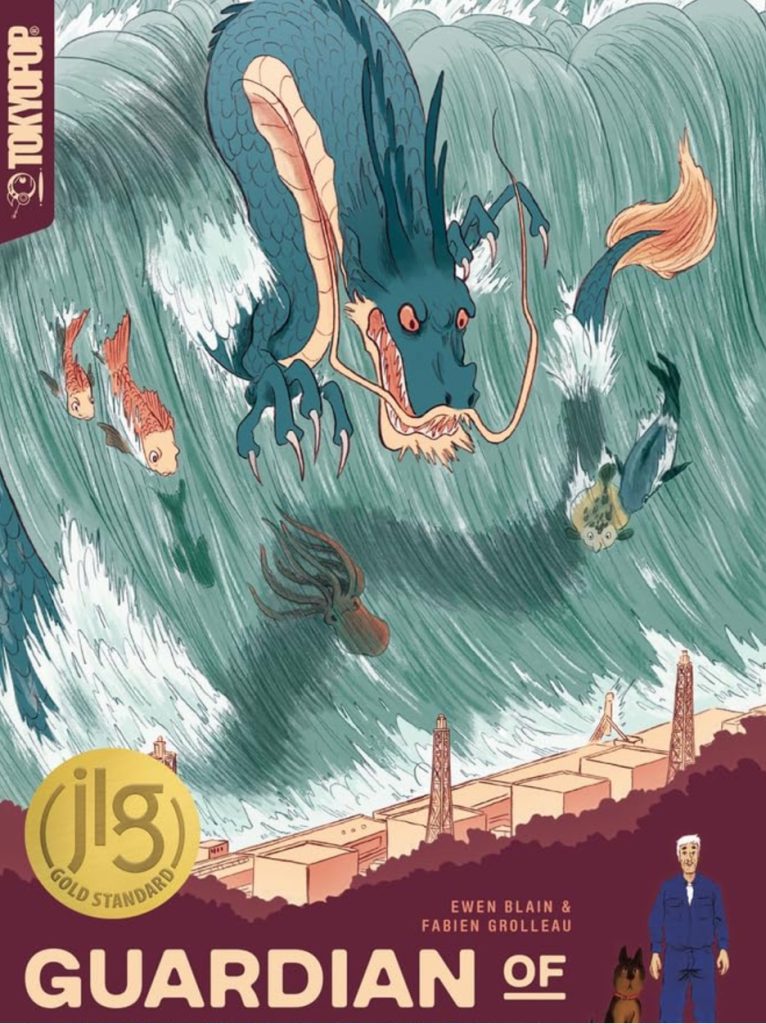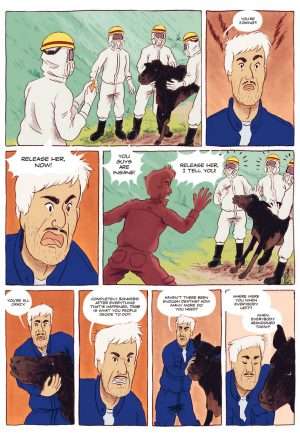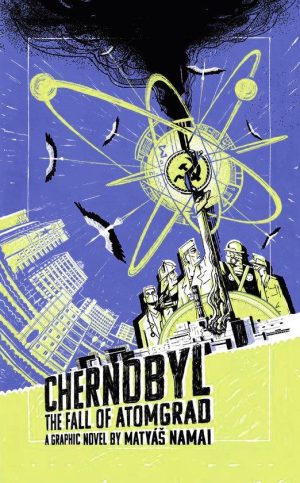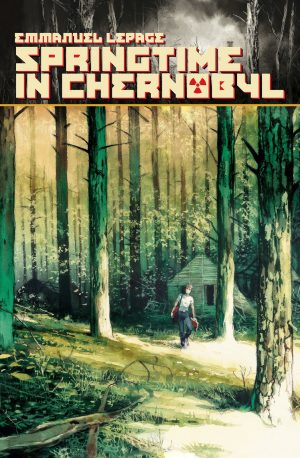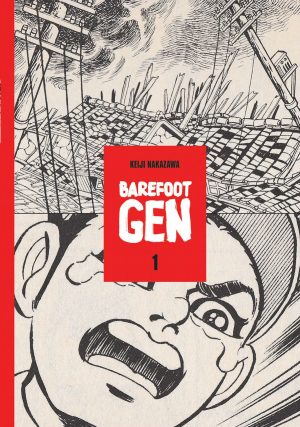Review by Colin Credle
Guardian of Fukushima really needs to be read cover to cover to understand the magnitude of the event underpinning our hero’s journey. The foreword by Roland Kelts informs us on March 11, 2011, the Japanese town of Fukushima was hit by an earthquake measuring an historically astonishing 9.0 on the Richter scale; the equivalent of 21 trillion kg of TNT. The consequent tsunami waves towered above 130 feet, rushing inland at 400 mph, but the Daiichi Nuclear Plant was buttressed with concrete breakers only able to withstand 30 ft waves. Once Daiichi was flooded, four explosions resulted in one of the worse nuclear disasters in human history. The disaster continues to unfold as Japan deals with an empty, radiated zone that includes monumental amounts of contaminated sea water.
French Author Fabien Grolleau hails from Nantes, France, which sits in the shadow of Chinon Nuclear Power Plant, and this book is clearly a passion project. Grolleau weaves in Japanese folklore both to move the story along and to emphasize how long Japan has dealt with such events. He focuses on Fukushima rice farmer Naoto Matsumura, who remains in the contaminated zone to help abandoned animals. Naoto chain smokes, eats meat, knows he is now quite radiated, and that everyone will treat him as infectious, contagious, but he decides to stay. He has both a sense of humour about the absurdity of his situation and well-focused rage and concern about nuclear power plants.
After the first earthquake, Naoto calms his young nephew with folkloric tales about Namazu the catfish, upon whom all of Japan rests. Namazu is kept still by the god Kashimu, who stands on Namazu holding him still with his sword in his head. However, Kashimu sometimes falls asleep and Namazu tries to shake free, resulting in earthquakes. The Japanese folklore offers artist Ewen Blain an opportunity to illustrate some magnificent magical characters. Blain’s style is somewhat flat, straight lined and with minimal shading – it neither helps the story nor hinders as everything together is rather straightforward and simple.
We are introduced to Japanese Kami, divine beings that, according to Shinto religion, spring from nature. There are a few more folk tales, one leaving the reader with a heavy quote: “The past is an illusion that one never catches up to.” Naoto witnesses Fukushima after the disaster and the past seems even more starkly lost and illusory– everyone has been evacuated, buildings are empty and overrun with weeds. Naoto becomes a sensation and is invited to Germany, France and Switzerland to speak and protest against nuclear power. Yet, he always returns to Fukushima and his animals.
This is a well contained story with some introductory themes about nuclear power, our relationship with nature and our responsibility to animals. Despite being severely radiated, Naoto has yet to develop any radiation illnesses. Nuclear power plant employees have a statistically lower instance of cancer which experts attribute to chronic exposure to low grade radiation strengthening their ability to repair cell damage. Birds in the contaminated region of Chernobyl have exhibited remarkable physical ability to repair cell damage. So, Naoto continues to live in Fukushima helping the abandoned animals, smoking cigarettes and even welcoming visitors who come to assist. His name is unique enough to find more information about him on YouTube and there is even a blog cited in the book. The hero’s journey continues well after reading Guardian of Fukushima.
